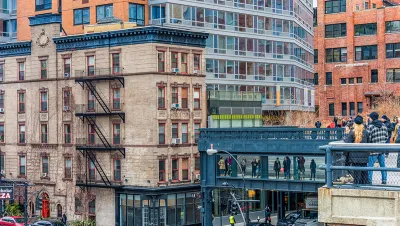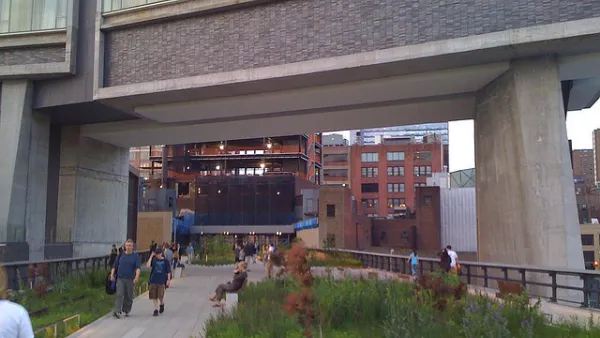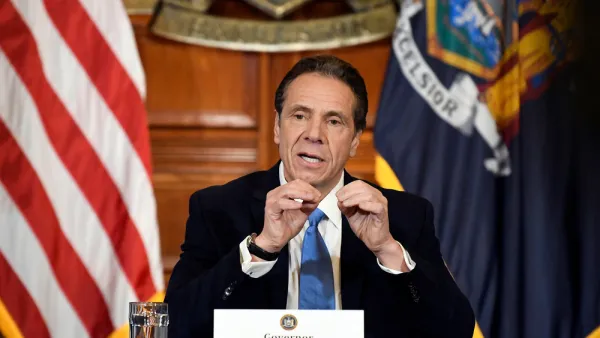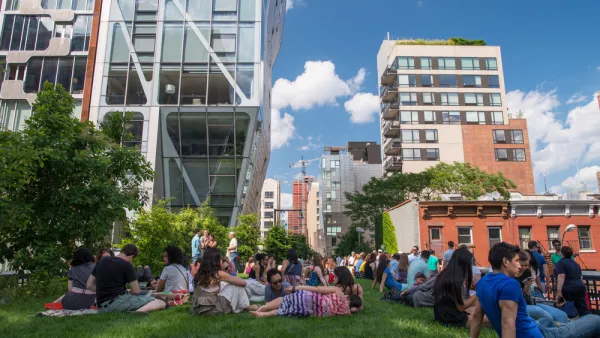A new debate has emerged, starting from a source very close to the project, about the effects of the High Line in New York City.

Criticisms of the High Line have ben far less frequent and much younger than the heaps of praise offered the transformative project. Much more common than concerns about gentrification or displacement, were willing imitations of the many of the component ideas at work on the High Line—an elevated structure given to pedestrians, a focus on plantings, community ownership of public space and much more.
In an article by Laura Bliss for CityLab, however, Robert Hammond, one of the co-founders of the Friends of the High Line and the current executive director of the organization, echoes some of the criticisms of the High Line. In his own words, as quoted in the article, Hammond says: "We were from the community. We wanted to do it for the neighborhood," adding, "Ultimately, we failed."
According to Bliss, Hammond and the Friends of the High Line are "course correcting," adding paid listening sessions, paid jobs-training programs, and new events, like a summer series of Latin dance parties.
But, writes Bliss, "there’s a lot the High Line could have done before it opened that it can’t make up for now. Its designers might have paid stronger attention to a few basic principles of attractive public spaces, and specifically those that attract low-income and minority park-users." The limited number of access points and the long list of prohibitions posted around the park provide two examples of design decisions that have produced predictable results. "Perhaps more critically, Friends of the High Line could have worked harder from the start to advocate for affordable housing," adds Bliss.
Bliss writes a lot more on the subject, also examining other public space projects around the city to show that the High Line's example has helped other advocates and designers avoid the same mistakes.
Steve Cuozzo, writing for the New York Post, takes umbrage with the characterization of the High Line as a failure, however. "[Hammond's baffling stroke of creator’s remorse lent dubious gravitas to the High Line Backlash," writes Cuozzo.
Cuozzo recounts criticisms of the project in recent years, offered by Mayor Bill de Blasio and the head of the tenants association at the nearby lower-income Fulton House project, describing them as "ridiculous" and "idiotic." Cuozzo's concluding thought: "I hope Hammond stops blaming himself for 'failure' and accepts that he helped bring forth a true wonder of our age."
FULL STORY: The High Line's Next Balancing Act

Analysis: Cybertruck Fatality Rate Far Exceeds That of Ford Pinto
The Tesla Cybertruck was recalled seven times last year.

National Parks Layoffs Will Cause Communities to Lose Billions
Thousands of essential park workers were laid off this week, just before the busy spring break season.

Retro-silient?: America’s First “Eco-burb,” The Woodlands Turns 50
A master-planned community north of Houston offers lessons on green infrastructure and resilient design, but falls short of its founder’s lofty affordability and walkability goals.

Test News Post 1
This is a summary

Analysis: Cybertruck Fatality Rate Far Exceeds That of Ford Pinto
The Tesla Cybertruck was recalled seven times last year.

Test News Headline 46
Test for the image on the front page.
Urban Design for Planners 1: Software Tools
This six-course series explores essential urban design concepts using open source software and equips planners with the tools they need to participate fully in the urban design process.
Planning for Universal Design
Learn the tools for implementing Universal Design in planning regulations.
EMC Planning Group, Inc.
Planetizen
Planetizen
Mpact (formerly Rail~Volution)
Great Falls Development Authority, Inc.
HUDs Office of Policy Development and Research
NYU Wagner Graduate School of Public Service




























